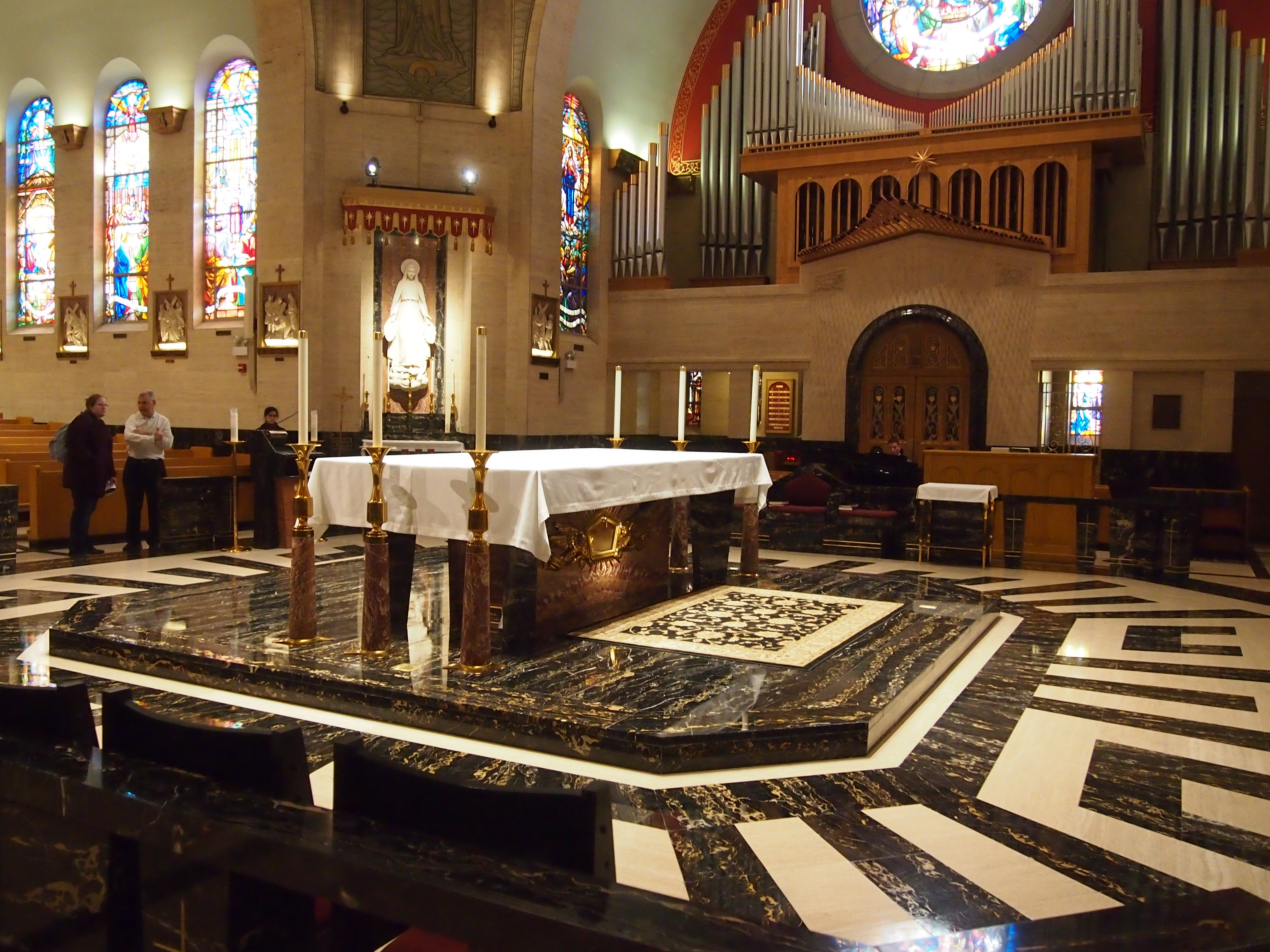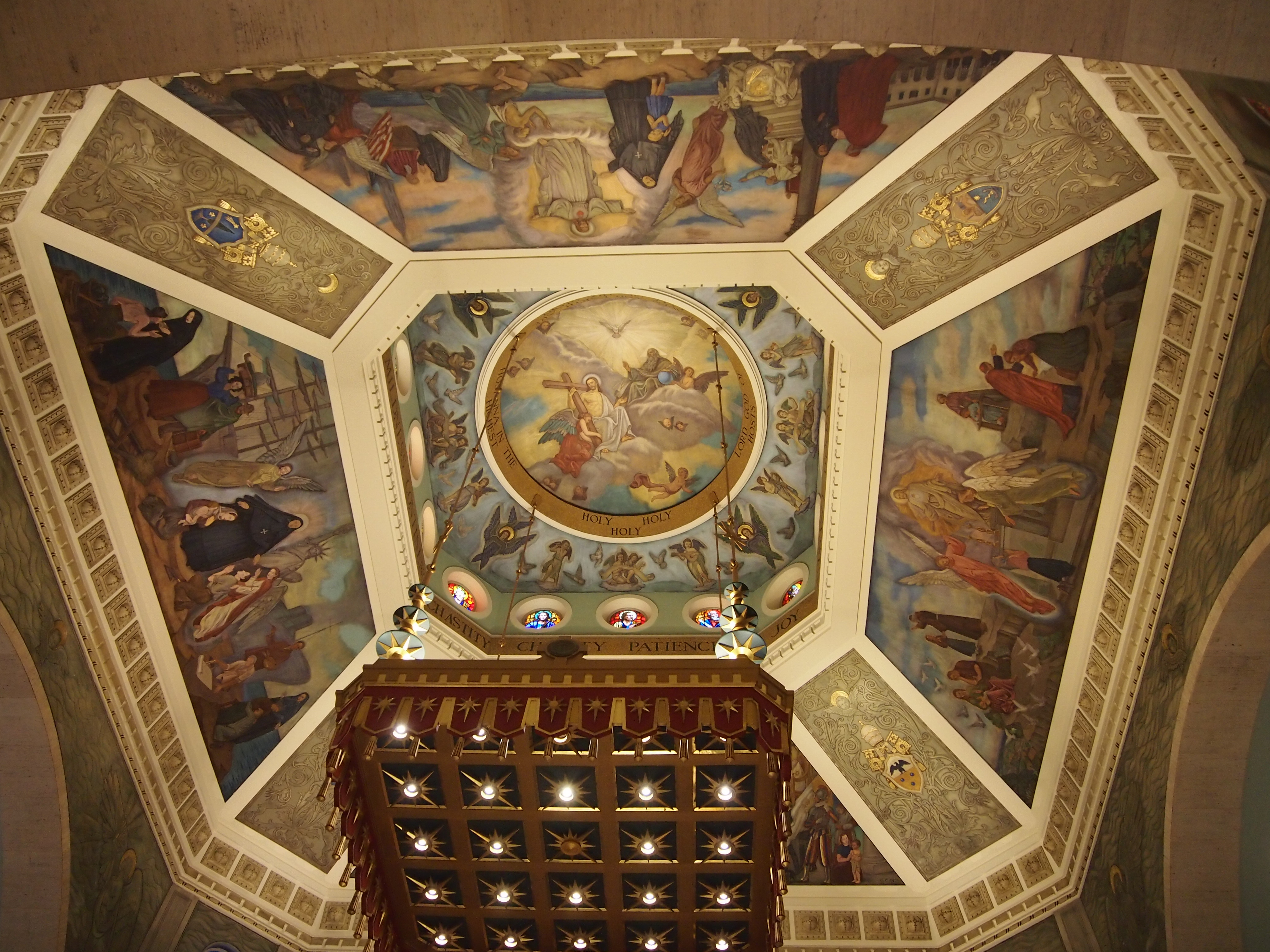I expected to see interesting architecture on last week’s Openhousechicago. I didn’t expect to run across the humerus of a saint. But the relic arm bone’s behind glass and under the altar of the National Shrine of Saint Frances Xavier Cabrini, which is just west of Lincoln Park.
 The shrine itself is magnificently ornate, done in a “modern Romanesque” style. Mosaics and frescoes on the dome overhead illustrate the life of the saint; the stained glass all around tell of the Resurrection, the Virgin Mary, the Holy Spirit, the Apostles, and more, even including the seal of the Missionary Sisters of the Sacred Heart of Jesus, which was founded by Mother Cabrini; there are four side chapels and four side altars; and the shrine has a Tamburini Pipe Organ, an Italian variety that I’ve read is rare in North America.
The shrine itself is magnificently ornate, done in a “modern Romanesque” style. Mosaics and frescoes on the dome overhead illustrate the life of the saint; the stained glass all around tell of the Resurrection, the Virgin Mary, the Holy Spirit, the Apostles, and more, even including the seal of the Missionary Sisters of the Sacred Heart of Jesus, which was founded by Mother Cabrini; there are four side chapels and four side altars; and the shrine has a Tamburini Pipe Organ, an Italian variety that I’ve read is rare in North America.
This is the view of the dome from the front pews, and a part of the baldachino (canopy) over the altar.
 I’ve been in a fair number of ornate churches, but what struck me about this place was how new it feels. Not just new by the standards of European sacred spaces – which might be 100 years or less – but new by American standards. This iteration of the shrine was only opened last year.
I’ve been in a fair number of ornate churches, but what struck me about this place was how new it feels. Not just new by the standards of European sacred spaces – which might be 100 years or less – but new by American standards. This iteration of the shrine was only opened last year.
A predecessor shrine was part of Columbus Hospital, an institution founded by Mother Cabrini (d. 1917) at this location in 1905. All together she founded 67 hospitals, schools, and orphanages in the Americas and Europe. I’m pretty sure I knew about the Columbus Hospital before it closed in 2002, but never ventured into it or the original shrine.
A condo tower was eventually developed on the site of the hospital – an extremely valuable piece of land, with its immediate access to Lincoln Park and views of Lake Michigan – but part of the deal was that the shrine had to be redeveloped on the site as well. So the floors over the shrine, which is a separate entity within the structure, are residential condos. An unusual arrangement.
The shrine also includes offices and a small museum about the saint. Among other things, the room in the hospital in which Mother Cabrini lived until her death is re-created, and on display are a habit she wore, her bed, an address book, and a to-do list (“continue work on that fourth miracle this week”).